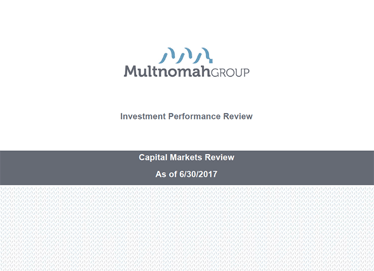 The U.S. economy plodded along at an annualized rate of 1.4% in the first quarter. This is consistent with the late stage economic recovery which began after the 2007-2008 global financial crisis. The current expansion is in its ninth year, the third longest since the Civil War.
The U.S. economy plodded along at an annualized rate of 1.4% in the first quarter. This is consistent with the late stage economic recovery which began after the 2007-2008 global financial crisis. The current expansion is in its ninth year, the third longest since the Civil War.
The labor market is near full employment with the June unemployment rate at 4.4% with few signs of wage inflation. In June, the domestic job market roared back to life, with a better-than-expected 222,000 new positions created during the month. Core CPI decreased to 1.7% in May.
The lack of inflation has perplexed policymakers at the Federal Reserve. For the third time in less than a year, the Fed raised short-term rates by 25 basis points. The Fed believes economic growth will continue at its moderate pace, as inflation and unemployment remain low. The yield curve continued to flatten in the second quarter despite the Fed raising rates; the 10- and 30-year Treasury yields declined modestly to 2.31% and 2.84%. Consumer sentiment and spending have been a mixed bag in 2017, while the U.S. manufacturing index rose to its highest level in about three years.
The S&P 500 continued to climb, rising more than 3% for the second quarter, with a 9.3% gain year-to-date through June 30. Healthcare stocks continue their comeback reporting a gain of over 7% in the quarter, the largest sector gain in the S&P 500. Industrial stocks followed healthcare, gaining nearly 5%. Telecom and energy stocks had negative returns for the second quarter in a row. Despite the technology sector’s nosedive in June, tech stocks gained 4.1% for the quarter.
Equity returns were even more attractive for international stocks, led by emerging markets that were up over 6% for the period. Developed international markets (particularly in the Eurozone) were strong as well. The economic recovery in the Eurozone is a bright spot for the global economy after a prolonged period of weakness and uncertainty.
Commodities continued to struggle into the second quarter, maintaining its title for the worst performing asset class for the period. Crude oil prices declined 9% for the quarter finishing at $46 per barrel. While real estate fundamentals are still strong, the cycle appears to be in the latter stages of its recovery. After weakness in the second half of 2016, REITs gained nearly 5% for the first half of 2017.
To view Multnomah Group's full Capital Markets Review, please click here.

